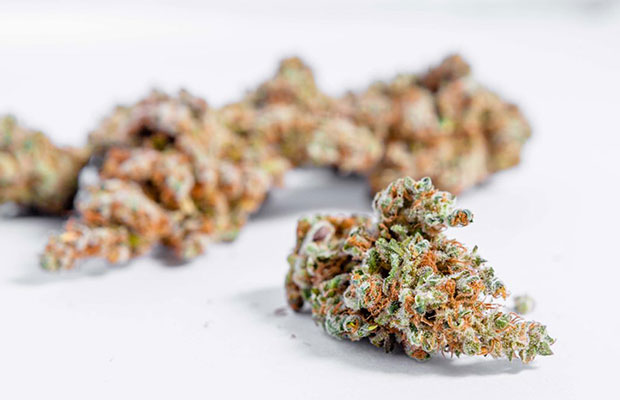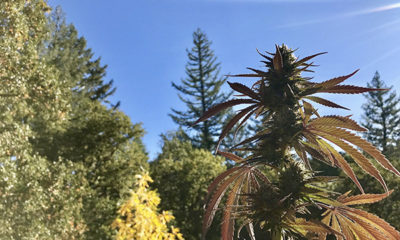
Joint Opinions
Sensible Minnesota: Using Medical Cannabis for Chronic Pain
As states grapple with the re-integration of medical cannabis into the physician’s compendium, there are hundreds of small dramas being played out all across the nation, indeed all around the globe. Many go unreported except for local coverage. The process isn’t as sexy as tie-dyed hippies with mammoth bongs and glazed expressions so it is not deemed “newsworthy.” Too bad because there is plenty of drama being made… you just have to know where to look and be patient as the pieces fall into place.
Minnesota is a case in point. The state passed a medical cannabis law in May 2014 but intractable pain was not among the medical conditions listed for inclusion unless it was a symptom of cancer or terminal illness. Groups like Sensible Minnesota and private individuals almost immediately began to lobby for inclusion of intractable pain. The law gives the state commissioner of health the authority to include “other conditions” and so the Office of Medical Cannabis (OMC) set out to study the situation.
This is nothing new. These scenes have played out across the country. But Minnesota should be commended for the way in which it conducted the study. The transparency was refreshing and the results, for those who take the time to review them, provide a microcosm of cannabis and chronic pain issue.
The OMC held hearings, of course, but they also solicited written comment which has been compiled in an online PDF booklet entitled “Public Comment on Adding Intractable Pain as a Qualifying Condition for the Minnesota Medical Cannabis Program.” OK, it may not sound like a page-turner but if you are interested in medical cannabis it is a pretty good read. The majority of the comments (388 out of 417) were favorable to adding intractable pain to the list of qualifying conditions and the majority of those 388 (35 percent or 136 responders) stated they would like legal access to cannabis “as an option.” This is interesting because it implies that at least some of these responders have not yet tried cannabis. As one individual rather succinctly stated, “All I want is to try medical cannabis.”
Others were more explicit and to the point:
“I went to the meeting in hopes of hearing there might be a chance to get the option to try this treatment, but all I saw were a lot of very desperate people, like me. If there is a chance, even a slight chance this marijuana treatment could offer some relief to so many suffering so much. I beg you to give us the option to do so.”
Ironically, at the same time these public hearings were taking place, the state’s eight-member Intractable Pain Advisory Panel voted against inclusion of medical cannabis for intractable pain. The Minnesota Star Tribune reported that the panel expressed concern “that patients eligible to use medical cannabis for pain have expectations that it would provide total relief and that such a perception may” lead patients to abandon conventional therapies. But there was no evidence of that in the comments to the OMC. Most patients seemed to be looking for additional help.
I think that intractable chronic pain should be considered as a condition worthy of prescription components of marijuana. It should be a treatment alongside of physical and occupational therapies, chiropractic, opioids and over-the-counter meds.
Of course there were those who have used cannabis for pain and, not surprising, their testimony was positive, including some from healthcare workers:
“I have a patient who suffered from a spinal cord injury and they treated him with narcotics. The pain level was only slightly reduced, but he started to have such bowel problems… He turned to using marijuana. He is able to control the pain and not suffer any side effects that he is aware of.”
The report is also scrupulous in its presentation of those commentators against the inclusion of cannabis for chronic pain. Their responses are predictable (“marijuana is addictive,” concern about teenager use, etc.) and is very balanced in presenting the information without any appearance of “taking sides.” This makes the document a valuable tool to reformers who are seeking to expand their own state law or wanting to include chronic pain in pending legislation.
In the end the state commissioner of health decided to include intractable pain and his recommendations became effective on July 1, 2016.
Minnesota is also tracking the state’s medical cannabis program via surveys and released a report in May 2016 entitled, “Early Results of Office of Medical Cannabis Surveys.” The document contains interesting data that can be very helpful to reformers and patients in other states. The executive summary begins, “The Minnesota Medical Cannabis Program is unique from other state programs in its intention to learn from the experience of its participants.”
Unique indeed and it should serve as a roadmap for other states. Medical cannabis is not rocket science. Cannabis is perhaps the safest therapeutic agent available. Research in laboratories is all well and good but the best clinicians, and bureaucrats, are those who listen to the patient. Minnesota is doing a good job of that.
Do you treat chronic pain with cannabis? Tell us about your experiences.
























